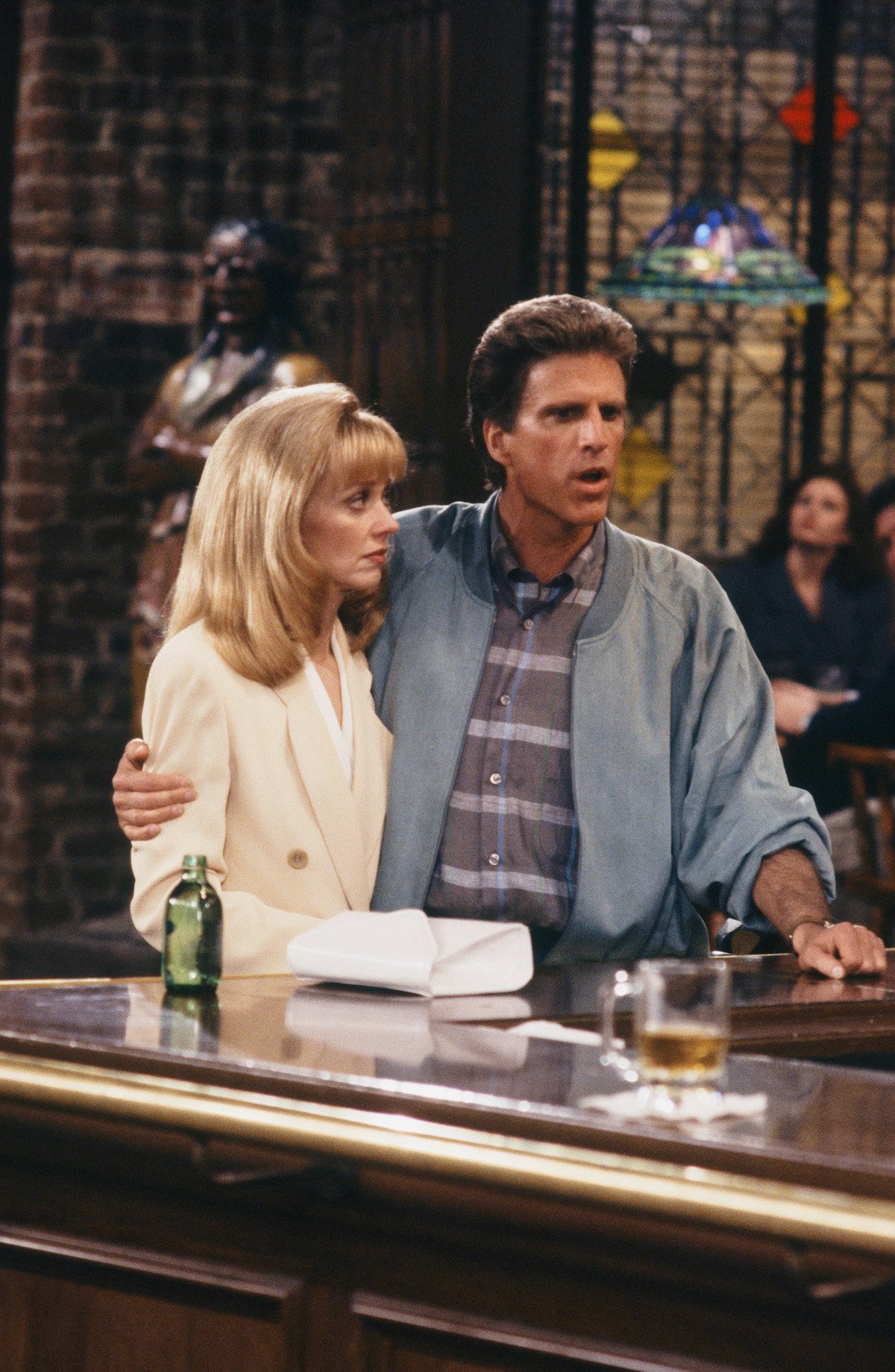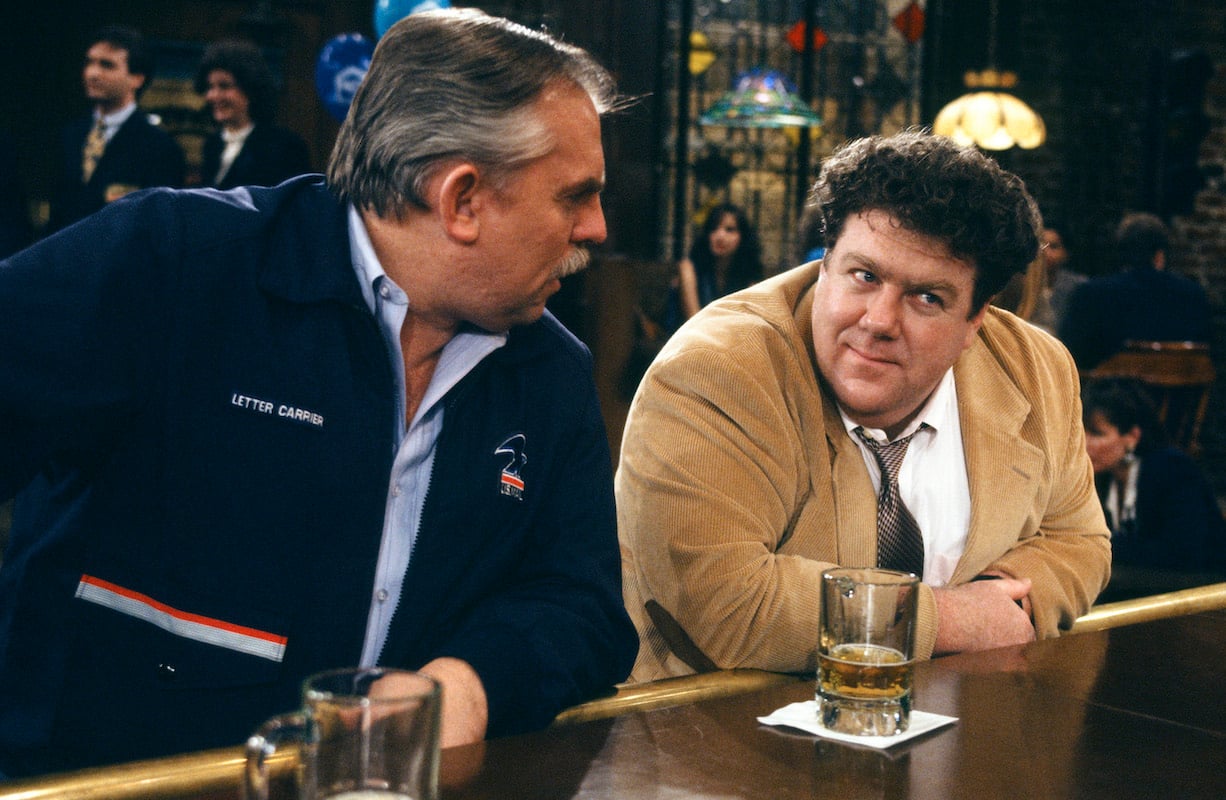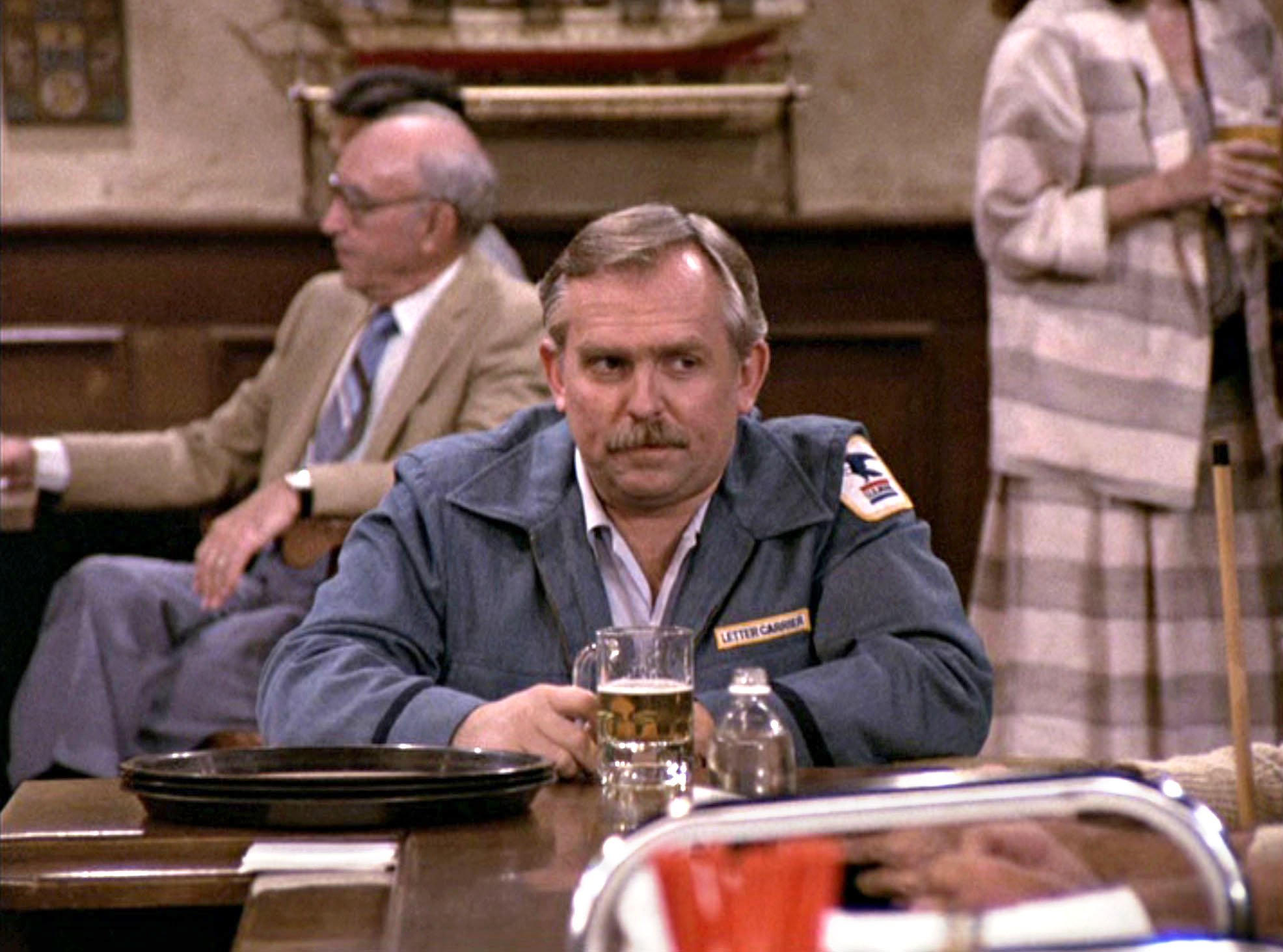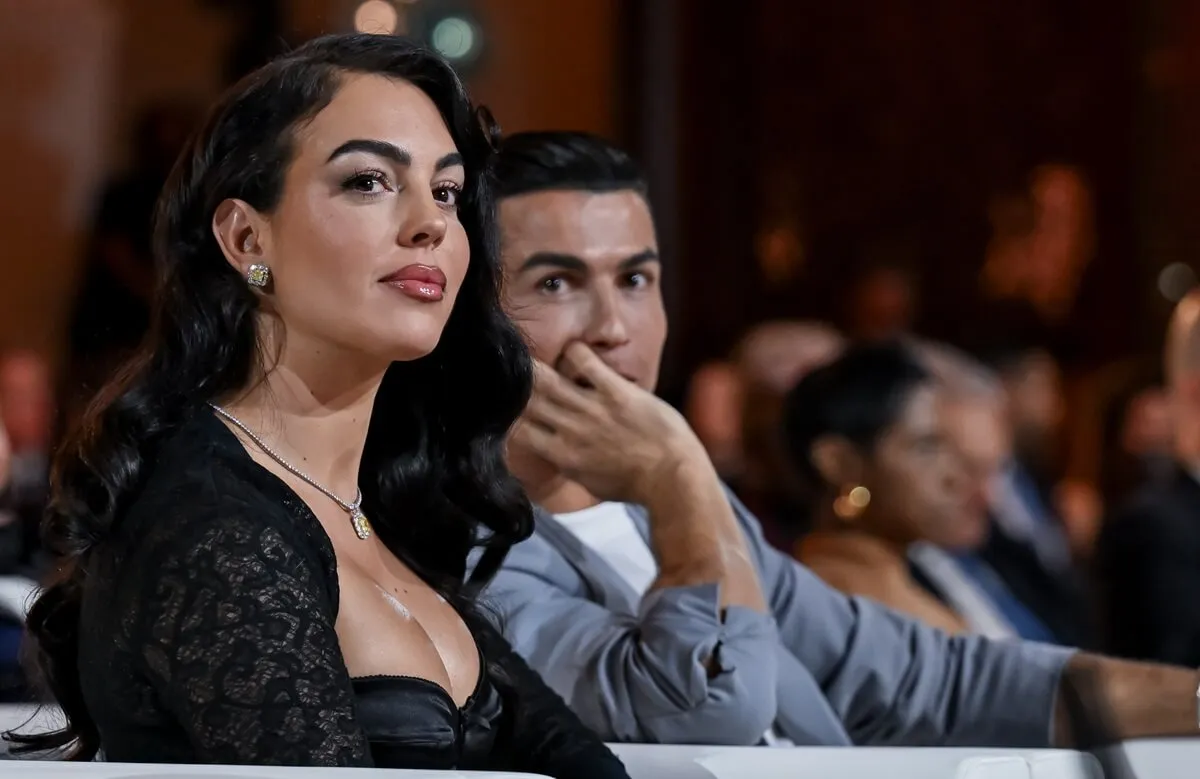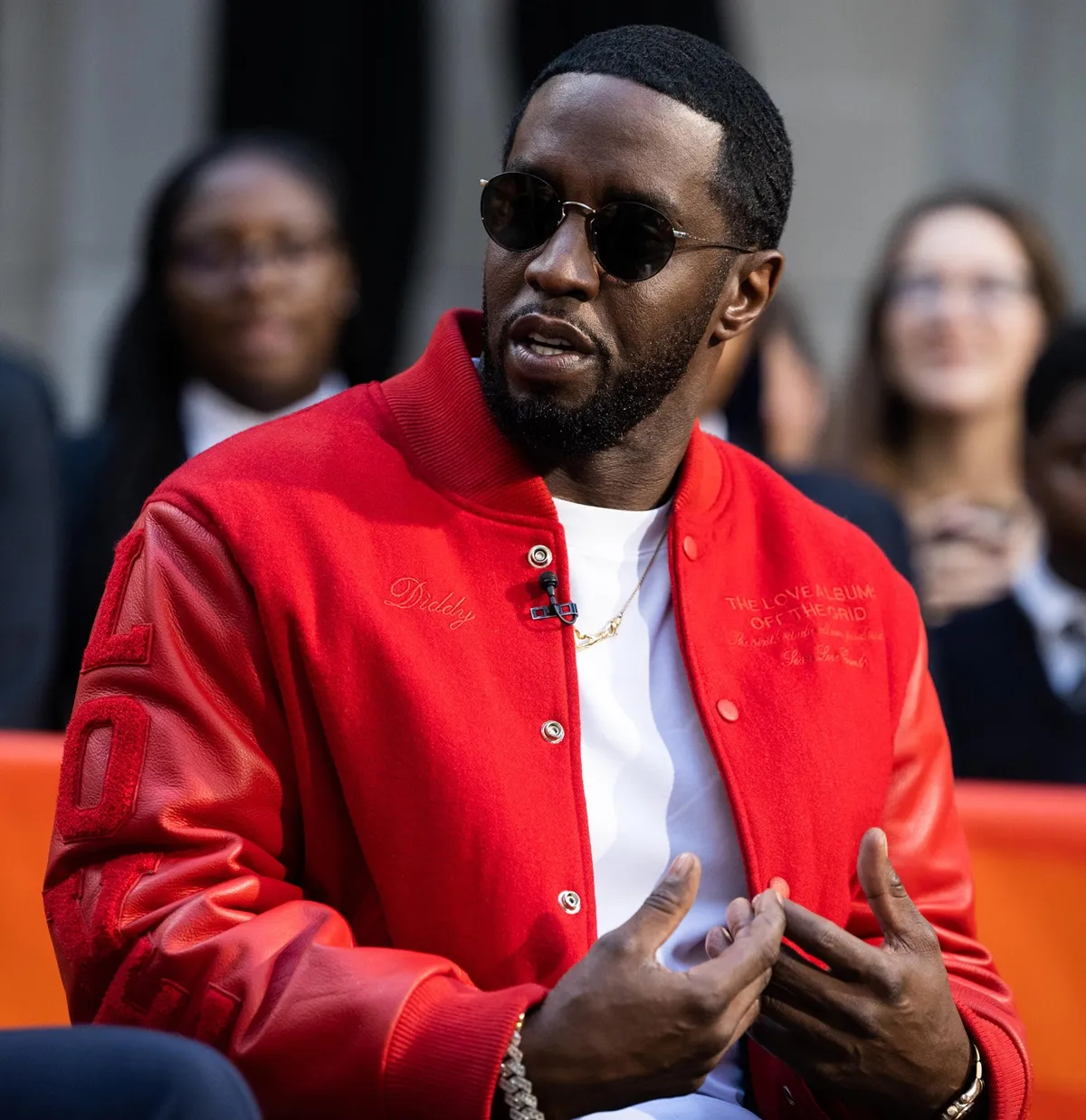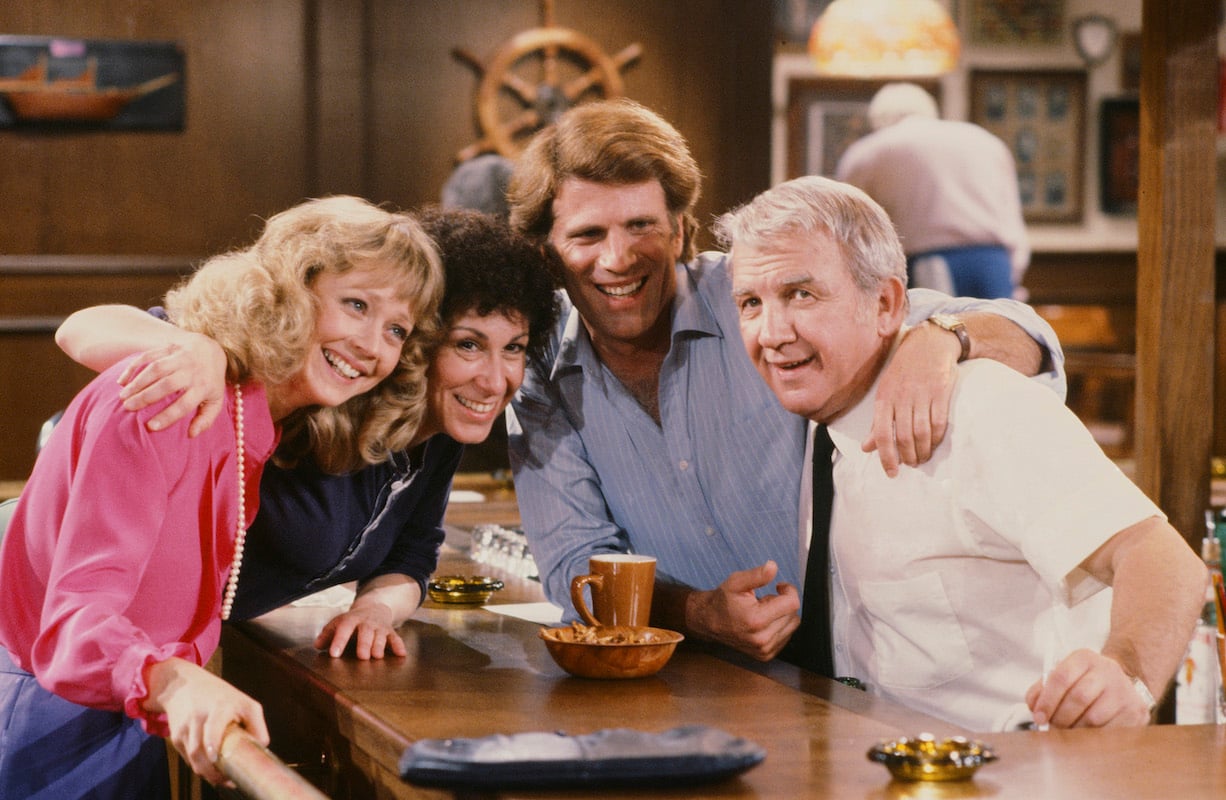
‘Cheers’ Added a Disclaimer After Viewers at Home Complained
The NBC comedy Cheers ran for 11 seasons and spun off Frasier, which ran for 11 more. You don’t get that kind of longevity without making the fans happy. However, in the beginning of the show, Cheers would get a lot of complaints. So they added a disclaimer to Cheers that you’d hear throughout the show to nip those complaints in the bud.
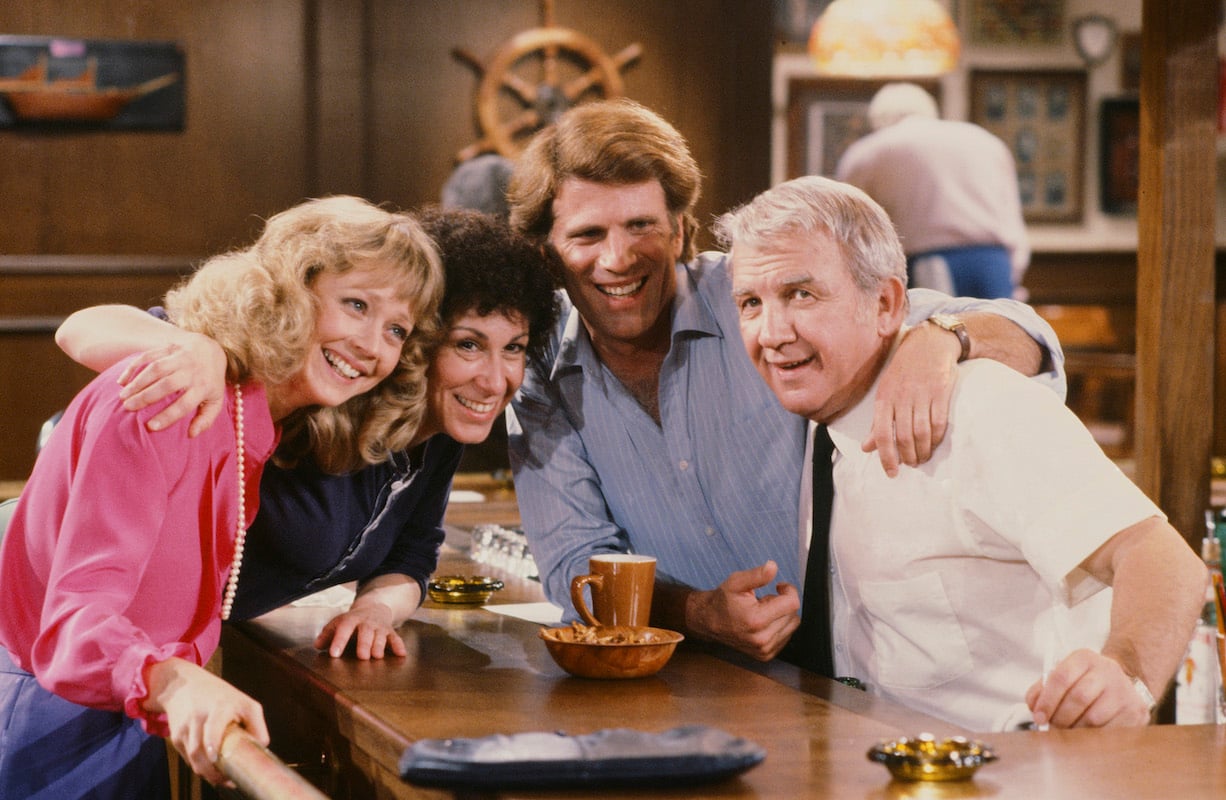
Longtime Cheers writer Ken Levine explained the disclaimer on his podcast Hollywood and Levine. On Jan. 6, 2021, Levine gave a commentary for the Season 1 episode “Boys in the Bar” and began with an explanation of that disclaimer.
The ‘Cheers’ disclaimer that began every episode
Whenever you tuned in to Cheers, either in first run or in syndication, you probably remember the words, “Cheers is filmed in front of a live studio audience.” That probably sounds standard and one wouldn’t have reason to question it. But Levine said the earliest episodes did not include that disclaimer and the network definitely heard about it.
“We start as always with the announcement that Cheers is filmed in front of a live studio audience,” Levine said on Hollywood and Levine. “And we had to do that because originally, we were getting a lot of complaints from people who thought that we were hitting the laugh track too hard.”
Laugh track vs. live laughter
By the 1980s, inviting an audience to watch television shows being filmed wasn’t new. I Love Lucy would film in front of live audiences. The Mary Tyler Moore Show and Norman Lear’s shows like All in the Family would perform to live audiences too. After Cheers, shows from The Cosby Show to The Big Bang Theory would continue to welcome live audiences.
Not every show did, though. Technology provided a device called a laugh track to add laughter to shows filmed on closed sets. Seinfeld made use of a laugh track. The first show ever to use one was 1950’s The Hank McClure Show. Not Cheers though. All the laughs you heard came from the guests in the studio.
‘Cheers’ didn’t have to fake the laughs
That’s quite an assumption for Cheers fans in 1982 to make when you think about it. Cheers was a hilarious, well written show. They didn’t need to fake their laughter. Every laughter you heard came from regular audiences hearing those jokes for the first time. In fact, sometimes they had to cut out some of the laughter to make the show fit in a 30 minute broadcast slot.
“It was really our laughs,” Levine said. “So we had to do that just to tell people that no, in fact, the laughs are earned.”
